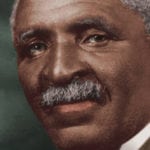 Weird Stuff
Weird Stuff  Weird Stuff
Weird Stuff  History
History 10 Legends Whose Last Moments Undid Their Glory
 Health
Health 10 Futuristic Ideas to Treat Common Medical Problems
 Weird Stuff
Weird Stuff Ten Surreal Attempts to Reverse Baldness
 Facts
Facts 10 U.S. Government Contingency Plans for the Unthinkable
 History
History 10 Weird Distractions from the Great Depression
 Movies and TV
Movies and TV 10 Fictional Kings Who Go from Good to Bad
 Food
Food The Fantastic Chemistry Behind Why 10 Popular Foods Taste So Good
 Technology
Technology 10 Futuristic Fungal Technologies
 History
History 10 Not-so-Spooky Events That Also Happened on October 31
 Weird Stuff
Weird Stuff 10 Things So Rare They’ve Only Been Found Once
 History
History 10 Legends Whose Last Moments Undid Their Glory
 Health
Health 10 Futuristic Ideas to Treat Common Medical Problems
Who's Behind Listverse?

Jamie Frater
Head Editor
Jamie founded Listverse due to an insatiable desire to share fascinating, obscure, and bizarre facts. He has been a guest speaker on numerous national radio and television stations and is a five time published author.
More About Us Weird Stuff
Weird Stuff Ten Surreal Attempts to Reverse Baldness
 Facts
Facts 10 U.S. Government Contingency Plans for the Unthinkable
 History
History 10 Weird Distractions from the Great Depression
 Movies and TV
Movies and TV 10 Fictional Kings Who Go from Good to Bad
 Food
Food The Fantastic Chemistry Behind Why 10 Popular Foods Taste So Good
 Technology
Technology 10 Futuristic Fungal Technologies
 History
History 10 Not-so-Spooky Events That Also Happened on October 31
10 Of The Most Unlikely Historical Friendships
Everybody can benefit from having a friend. They can help us get through the tough times or just help us save a few bucks with a ride to the airport. Bonds of friendship can be formed through many different ways such as common interests, sharing hardships, or even geographical proximity. Look close enough, and you will find friendships in the unlikeliest of places.
10Arthur Conan Doyle & Harry Houdini
After establishing himself as a renowned escapologist, Harry Houdini spent the latter half of his career debunking the supernatural and exposing fake psychics. Conan Doyle, on the other hand, was a complete believer in anything remotely connected with the paranormal. Particularly, he was a massive fan of mediums after one pretended to talk to his son who’d died in World War I. It’s hard to think these men would ever become friends, but they were friends for years, mostly because Houdini hid his real feelings about spiritualists.
Houdini never set out to become the mortal enemy of psychics. At first, he had a genuine interest in the subject, particularly after his mother’s death. However, being a trained magician, he could easily spot the techniques that psychics used. His real feelings on the subject finally became evident to Doyle during a seance conducted by Doyle’s wife, in which she used automatic writing to supposedly communicate with Houdini’s mother. Even for a psychic reading, it went very badly: Lady Doyle drew a cross even though Houdini’s mother was the Jewish wife of a rabbi. She also filled pages of fluent English even though Cecelia Weiss barely spoke the language.
After that, Houdini declared war on spiritualists. With the help of Scientific American, he also set up a cash prize for anyone who demonstrated any kind of supernatural ability. That prize was never collected, and Houdini’s friendship with Doyle never recovered.
9Marilyn Monroe & Ella Fitzgerald
In 1955, Ella Fitzgerald’s career really took off after an impressive showing at the Mocambo nightclub in Hollywood, one of the most happening spots in town. However, her performance might not have ever happened without the help of an unlikely supporter—Marilyn Monroe.
The owner of the nightclub didn’t want to book Fitzgerald. It has often incorrectly been said that it was because of her race, but other black performers like Eartha Kitt had performed at the Mocambo in the years prior. Others say the owner Charlie Morrison simply didn’t see Ella Fitzgerald as a big draw.
Whatever the reason, it took Marilyn Monroe’s support to get Ella the gig. Monroe promised that when Ella played, she herself would be at a table, front and center. This was enough not only to land Fitzgerald the job but to bring a lot of media attention to her performance. From then on, Ella Fitzgerald never had to play a second-rate jazz club again.
The two of them became pretty close afterward, finding that they had a lot in common. Fitzgerald saw Monroe as a woman ahead of her times to whom she owed a great debt. In the meantime, Marilyn not only was a fan of Ella Fitzgerald but used her music to learn how to sing.
8Helen Keller & Mark Twain

Helen Keller, an author and political activist, became a national hero and an inspiration for the way she overcame being deaf and blind. The early stages of her education, when she first learned how to communicate, formed the basis for the well-known play The Miracle Worker. And throughout her career, Helen had a surprising admirer—Mark Twain.
A friendship between the two seemed unlikely, with Twain being 45 years older than Keller. When the two first met in 1894, Helen was just 14 years old, and Mark Twain was already in his fifties. However, Helen reminded the author of his youngest daughter, Jean Clemens, which is partially the reason why the two grew fonder of each other over the next 16 years until Twain’s death. According to Keller, Twain had a great intuition about how it felt to be blind and never made her feel embarrassed or helpless. At the same time, he was also very understanding, oftentimes sharing stories and allowing Helen to read them from his lips. He also defended her after she left the Perkins School for the Blind due to accusations of plagiarism.
In 1900, Twain had a significant long-lasting effect on Helen’s life when he introduced her to Standard Oil industrialist Henry Huttleston Rogers and arranged for him to pay for Helen’s education at Radcliffe College. In 1904, Helen graduated from Radcliffe College and became the first deaf and blind person to earn a bachelor’s degree.
7T.S. Eliot & Groucho Marx
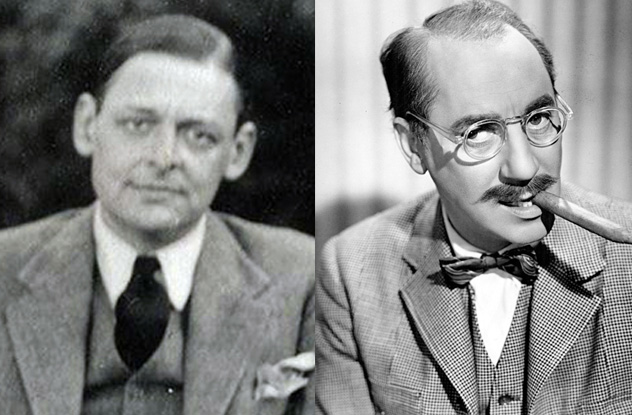
T.S. Eliot was a pioneer of the Modernist movement. He wrote plays, poems, and essays critiquing social and literary issues. He was educated at Harvard and Sorbonne and won the Nobel Prize in Literature in 1948. He was also a giant fan of the slapstick antics of the Marx Brothers, which is why he wrote to Groucho Marx in 1961, asking for a signed photograph.
Groucho was the king of gags, always with a witty comeback at the ready. However, his greatest shame was the lack of a formal education, so he was ecstatic to have such an erudite fan. He promptly wrote back to Eliot, starting what would be a three-year, long-distance friendship. The two of them became pen pals, writing to each other and praising each other’s work.
Neither man realized this was a friendship best kept at a distance. It ended abruptly once the two had their first face-to-face meeting in 1964. Marx wanted to show Eliot how educated he was by discussing his essays and quoting his poems, while Eliot wanted to talk about old Marx Brothers films. Neither one got what he wanted—Groucho couldn’t remember the stuff Eliot wanted to know, while the author wasn’t really interested in hearing his own poetry recited back to him. They stopped communicating altogether shortly after that disastrous dinner.
6Richard Burton & Giacometti Prodgers
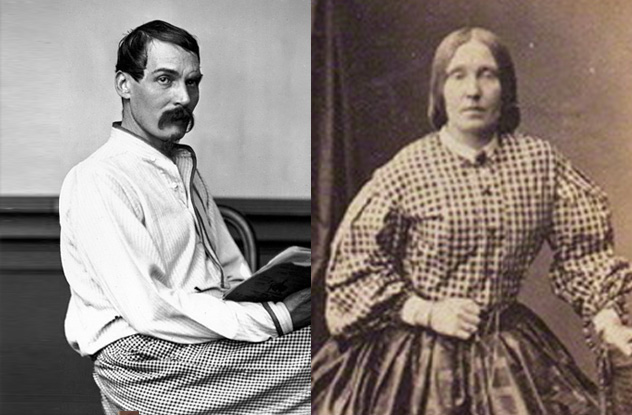
Richard Francis Burton was a 19th-century British explorer, primarily known for discovering the source of the Nile alongside fellow explorer John Speke, even though the two didn’t get along. In fact, Burton didn’t really get along with anyone. He wasn’t particularly friendly or welcoming even to his own family, but he did have one relationship that puzzled everyone.
Mrs. Giacometti Prodgers was a Victorian oddball. A woman of means, Mrs. Prodgers decided to take out her ire on London’s cab drivers for reasons unknown. After she learned precisely how much fares all over London would cost, Mrs. Prodgers would force cabbies to stop right before they could charge her for a full fare. Those foolish enough to travel the extra few feet to score some extra money were taken to court.
Nobody knows why Mrs. Prodgers had it in for cabbies, but she sued over 50 of them for fee technicalities and would often receive guidance and advice from Richard Burton. People were confused as to why Burton was so good-natured to Mrs. Prodgers.
Obviously, rumors of an affair between the two sprang up, but Burton was well accustomed to sex scandals. He caused one when he translated the Kama Sutra into English. He caused another one when he founded the Kama Shastra Society, a loophole that allowed its members to circulate obscene books that were otherwise banned. Burton once proclaimed: “I am proud to say I have committed every sin in the Decalogue.
5Emily Dickinson & Thomas Wentworth Higginson
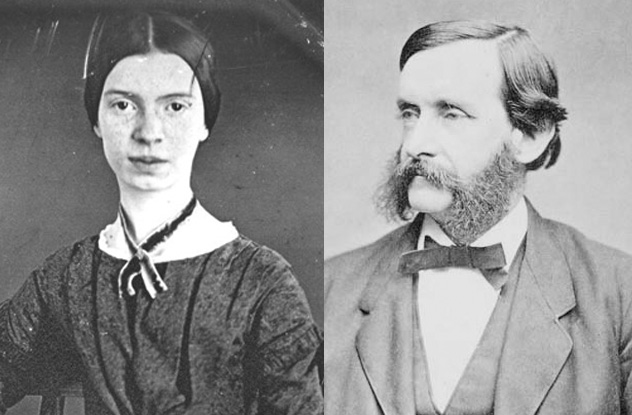
Thomas Wentworth Higginson is not a name that immediately rings a bell nowadays. He was an author, a literary critic, and a minister, known primarily for his abolitionist efforts as part of the Secret Six. What’s often forgotten is that he also served as mentor and editor for one of the most influential poets in American history, Emily Dickinson.
In 1862, Higginson published an essay in the Atlantic Monthly titled “Letter to a Young Contributor,” serving as inspiration for aspiring writers. Afterward, he received a letter from a then-unknown Emily Dickinson. She presented several of her poems and asked for criticism and advice (or “surgery,” as she put it).
That letter prompted a teacher-student relationship that lasted 24 years until Dickinson’s death. Higginson became a fan of her writing immediately, although he also urged her not to publish it due to its unconventional structure—no title, no punctuation, short and long verses combined, etc. In fact, out of the approximately 1,800 poems Emily Dickinson wrote, fewer than a dozen were published during her lifetime. It was only after her death that Dickinson’s poetic proficiency became known, and this was thanks to Higginson and fellow writer Mabel Loomis Todd, who edited and published the first volume of Emily Dickinson poems.
4Ulysses S. Grant & James Longstreet
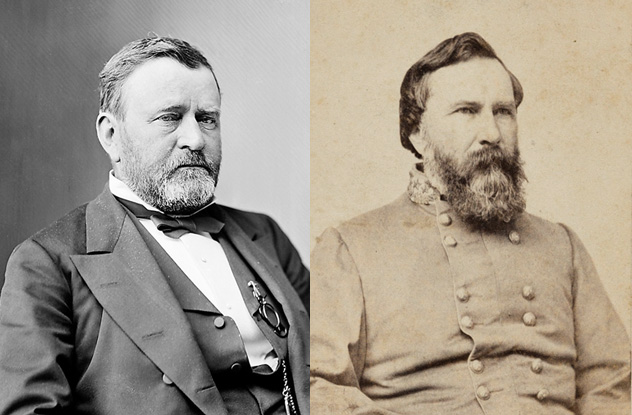
It shouldn’t be that surprising to find out that two American generals were friends. These two attended West Point together. After graduation, they were both assigned to the 4th US Infantry. They fought in the Mexican War together. Grant and Longstreet went through a lot together, but they also overcame something that would put a damper on most friendships—they fought on opposite sides during the Civil War.
According to Longstreet, the two of them became friends in 1839 while serving as cadets in the Academy. He taught the future president to play brag (a predecessor of poker). A few years later, Longstreet even claimed to have introduced Grant to Julia Dent, his future wife and first lady of the United States.
During the Civil War, Longstreet quickly rose through the ranks until he became one of General Lee’s most trusted allies. Lee called him his “Old War Horse,” as Longstreet gained several important victories for the Confederacy. Later on, Longstreet was instrumental in convincing Lee to surrender at Appomattox, firm in the belief that Grant would offer fair terms. He did—upon seeing his friend-turned-rival, Grant invited him to a game of brag for old times’ sake.
Their friendship was rekindled after the war. Longstreet moved to New Orleans and became a prominent member of the Republican Party with the endorsement of his old pal General Grant. In turn, he would later provide his support when Grant ran for President.
3Tom Jones & Lady Rothes
We’re are not talking about Tom Jones of “What’s New Pussycat?” fame but rather Thomas William Jones, working-class able seaman from Wales. And Lady Rothes was Lucy Noel Martha, Countess of Rothes, wife to the 19th Earl of Rothes and prominent London socialite. Normally, these two would have nothing in common, but their paths crossed on April 15, 1912, aboard the Titanic.
They were in the same lifeboat as the Titanic sank. There were 39 people aboard Lifeboat Eight: 35 female passengers, three stewards, and Thomas Jones, who was in command. When asked about the passengers on his boat, Jones remembered only one—Lady Rothes. It was highly unlikely that the boat would have ever reached the Carpathia without her assistance. Besides Jones, Lady Rothes was the only one who knew anything about sailing. She taught the others how to row and operated the tiller.
After they were rescued, Lady Rothes and her cousin, Gladys Cherry, lauded the efforts of Thomas Jones. Both mentioned that he wanted to go back after more people but was overruled by others on the boat. The countess and the seaman never met again, but they maintained correspondence for the rest of their lives, with the countess making sure to send him a Christmas letter every year.
2Larry Flynt & Jerry Falwell
Out of all the unusual pairings on the list, this one may be the most unlikely. At first glance, the two men seem like complete polar opposites: Larry Flynt is a businessman who made a fortune out of a porn empire, and Jerry Falwell is a conservative reverend who preaches moral values. Not only do they have totally different interests, but the two have been publicly feuding for years. They were even tangled in a high-profile $50 million lawsuit that was immortalized in the movie The People vs. Larry Flynt.
Falwell called Flynt a “sleaze merchant,” while Flynt mockingly suggested in his magazine that the reverend had sex with his own mother. It would seem impossible that these two could ever become friends. And yet, when they met face-to-face in 1997, almost a decade after the trial, there were nothing but hugs and kisses.
It only took the two men to meet in private to realize they had a lot in common. Flynt used to be a bootlegger in his youth, like Falwell’s father. They had completely opposite views when it came to religion and politics but still found that they were able to have long, philosophical conversations on several topics. Each man knew what the other was selling, and neither one was interested in buying. However, that didn’t stop them from visiting each other frequently, exchanging Christmas cards, showing off pictures of the family, and even sharing diet tips.
1Samuel Beckett & Andre The Giant

An Irish novelist and a French wrestler walk into a bar. It sounds like the setup to a joke, but it was reality. In 1953, Samuel Beckett—playwright, poet, and Nobel Prize winner—moved to France after buying some land near Paris. He even built a house there with the help of a few locals. One of those locals, a Bulgarian immigrant named Boris Roussimoff, eventually became his friend and card-playing buddy.
Boris had a son named Andre who suffered from gigantism due to an excess of growth hormone. At the age of 12, Andre was already living up to his future moniker—he had a height of 190 centimeters (6’3″) and a weight of 110 kilograms (240 lb). As you could imagine, being this size created all kinds of problems for the young Andre, such as not being able to take the school bus because he couldn’t fit inside.
Since he owned a truck, Beckett played the role of the friendly neighbor and offered to take Andre to school every day. Later on, after he became a successful wrestler and actor, Andre would look back at his trips to school with fondness, recalling that he and Beckett mostly talked about cricket. And that was how Andre the Giant became the only person to have a Nobel laureate as a personal chauffeur.
Radu is a history/science buff with an interest for all things bizarre and obscure. Share the knowledge on Twitter, or check out his website.





